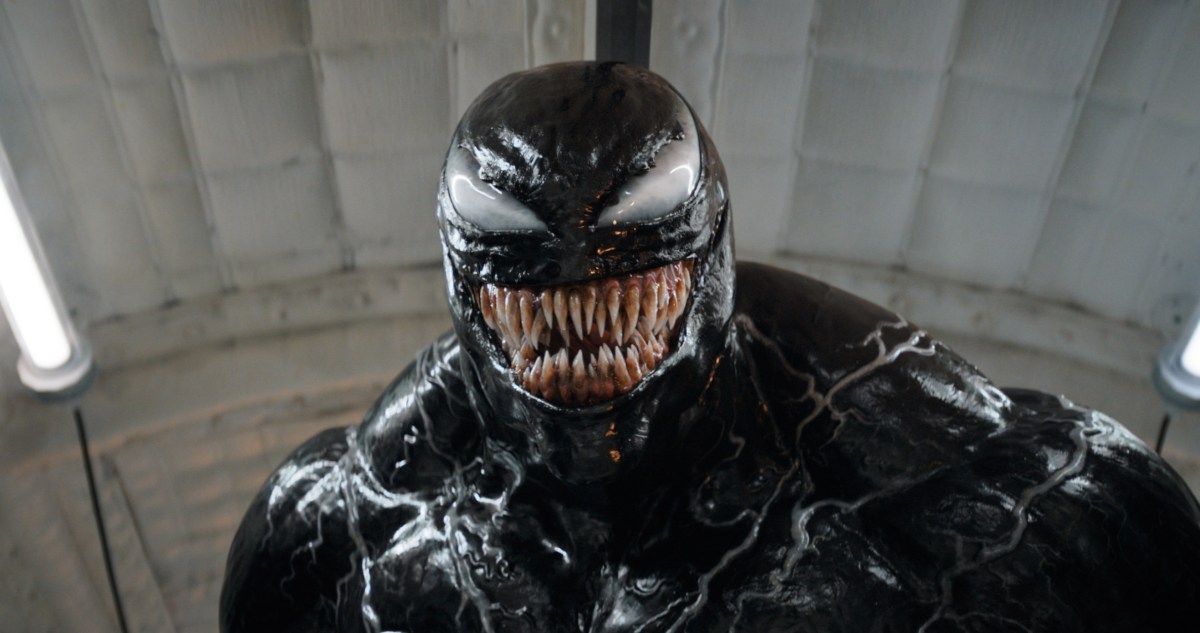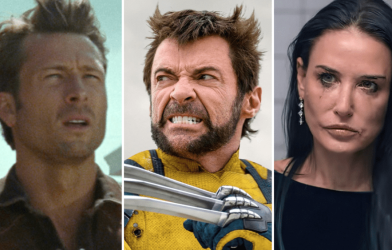Venom: The Last Dance may be one of those “You just had to be there” experiences. It feels cluttered, confused, and yet remarkably inconsequential. We’re told that the entire universe is at stake in this story, and yet nothing in the movie feels particularly threatening or even meaningful. So many different threads, ideas, and characters are introduced and then dispensed with, ignored, or contradicted, to the point where nothing lands — not even the supposed ending of this movie series.
As Polygon’s entertainment editor, I’ve learned that when a comic book movie baffles me this much, I’m probably missing something that was mangled from the source material. It’s always possible the story made more sense in its original form. So I turn to our resident comics super-expert Susana to help me unpack what I just saw. I asked her my big questions from Venom: The Last Dance to see if there’s any way bringing in some extra background lore could help save this messy, overstuffed, suspiciously goofy movie.
[Ed. note: Widespread spoilers ahead for Venom: The Last Dance.]
Tasha: Susana, let’s start with the McGuffin at the center of this movie: The codex, a nigh-magical hoobajoo that only the Eddie Brock/Venom symbiote (both voiced by Tom Hardy) share, and that the movie’s villain, Knull (Andy Serkis) wants, for Reasons.
Did you follow any of that, Susana? We’re told Venom has a codex because Eddie died at some point in these movies, and the symbiote revived him. But the film pretty pointedly doesn’t explain what a codex is or why it would be so rare, much less why it would work as a key to break Knull out of cosmic prison.
Susana: That’s easy enough — the “codex” is an idea adapted from Donny Cates and Ryan Stegman’s 2018 run on Venom. In the comics, a “codex” is a little trace of symbiote stuff that symbiotes naturally leave behind in the bodies of their hosts, particularly the nervous system. In a pinch, it can be used to tap into the symbiote hivemind. (In the comics, all symbiotes are connected in a species-wide hivemind, natch.)
In comics, it isn’t one codex that’s the key to freeing Knull, but lots and lots of codexes. That’s the main difference here: In the comics, codexes are the furthest thing from rare. They literally happen any time a symbiote bonds with a host for more than a fleeting moment. And thanks to the Venomverse and Venomized events, which were based around symbiotes bonding with all your favorite characters so you can see how cool they look in a Venom-ized suit, basically everybody of note in the Marvel Comics universe has a codex.
Knull was freed in the Absolute Carnage event, in which a Knull-communing Carnage went on a spree of ripping out people’s spines and eating them, in order to connect their codexes up to Knull, which would allow the god to regain control of the symbiote hivemind.
Tasha: In a way! It at least tells me more than the movie does about what a codex is supposed to be or how one is formed. And I can see why people making a movie would want to switch the dynamic from “This thing is available all over the universe” to “Our protagonist is a unique and special snowflake, and his McGuffin means the action will follow him from scene to scene, wherever he goes.”
So why would a codex/a lot of codexes free Knull from alien space jail? And given that we get no information about him in this movie except “He’s the god of symbiotes, and also, they hate him,” is there a backstory to him that would make him make more sense? Like, why does he want to destroy the universe, and why would this rando death-metal-guitarist guy have the power to destroy the universe?
Susana: In Cates and Stegman’s comics, Knull is a primordial god of the void, who ruled over the formless black nothing that stretched between the destruction of the 6th Cosmos and the creation of the 7th (our current one). He sees anything that isn’t the darkness of empty space as an encroachment on his domain.
Tasha: That is the most metal thing you’ve ever said.
Susana: Oh, I’m just getting started. Being the Most Metal is what cosmic superhero comics are all about!
When the Celestials started making the 7th Cosmos, Knull took that as an insult. Bathed for the first time in the light of creation, the god of the void reached into his own shadow and created the first symbiote, in the form of the Celestial-killing blade All-Black, the Necrosword. (All-Black was invented by Jason Aaron and Esad Ribić for their series Thor: God of Thunder. Cates and Stegman retroactively gave it an origin with Knull.)
The Celestials cast Knull back into the void, but he spent his time manifesting symbiote life from pure darkness, creating a shape-shifting, parasitic horde species fully controlled by a hivemind linked with his own divine consciousness. Then he launched that horde into the universe to devour all that it found.
Eventually, Knull’s control momentarily lapsed after a big fight with a young Thor (immortalized by human storytellers as the epic of Beowulf), and his symbiote army bonded with mortal hosts, discovering the concepts of “honor” and “nobility,” as Knull put it. The freed symbiotes rose up and imprisoned Knull in a massive ball of their own bodies, which, until 2018’s Venom #4, had always been understood to simply be the symbiote home planet.
Tasha: OK, gross. And this is why the symbiotes in Venom: The Last Dance are willing to bond with any and every human, including the ones who imprisoned them in tubes in an underground bunker, if it helps them fight off his creatures?
Susana: By comics canon, yeah. The symbiotes hate him because he was a god-tyrant, and they don’t like being his slaves. He wants to kill the universe because it is anathema to him. And he can do it because he’s a primordial cosmic entity.
Tasha: And why does he have an army of unkillable CG mega-bugs?
Susana: Oh, those are from a completely unrelated Venom comic. I got nothin’.
Tasha: Speaking of unrelated Venom stuff, I assumed all those symbiotes who show up for the big battle at the end and have distinctive colors and powers are from the comics? That whole sequence smelled like fan-candy to me, apart from the fact that most of those characters immediately get mulched. Was there anyone in there that Venom fans would care about?
Susana: It’s basically fan candy, but for just… an unspeakably small group of fans. The list of times Marvel Comics creators have tried to make a new symbiote/host hero or villain stick is longer than my arm, and most of them don’t rate more than a footnote. I’m checking wikis for all of these guys, but the ones on display seem to be based on Toxin (Officer Mulligan’s green form), and five more symbiotes roughly inspired by Venom: Lethal Protector. That 1993 miniseries, written by David Michelinie and drawn by several artists, introduced a litter of high-key toyetic offspring of the Venom symbiote.
Those five symbiotes were Riot (gray, turns his hands into hammers, etc.), Phage (brown, turns his limbs into spikes), Lasher (green, has extra back tentacles, attaches to the lady with a Christmas tree pin), Agony (purple, uses hair tentacles, attaches to Juno Temple’s Dr. Teddy Payne), and Scream (orange/yellow, also weaponized hair), and they seem to be the templates for Last Dance’s extra symbiotes. It’s complicated, though, because the movie doesn’t name any of them, and Riot was technically already used as the villain of 2018’s Venom (played by Riz Ahmed).
There’s also a two-headed symbiote at one point, but that one seems to be an original design, as best as I can research.
Tasha: How big a deal is Agony in the comics? Big enough to support her own movie? While The Last Dance’s post-credits scene leaves Sony a possible opening for a further Venom sequel, the film (title and all) seems to be aimed at shutting down the Tom Hardy Venom series, though Hardy has signaled he’d return if Venom got to fight Tom Holland’s Spider-Man in another Sony Spiderverse/MCU crossover.
So much of the way this movie treats Dr. Payne — as if her motivations and backstory are important, even though she doesn’t actually do much in the film, and as if her getting her own symbiote is a climactic, cathartic triumph for the story — only really makes sense if this movie is also being positioned as an Agony origin story that could be used to launch a new symbiote franchise. Which feels a lot like Sony trying to use Madame Web as a cinematic origin story for a bunch of new Spider-Women, but I digress. Clearly Agony doesn’t have Venom’s cultural cachet, but is there anything notable or interesting about her that could support a movie?
Susana: So, Teddy Payne appears to be a genderbent version of Dr. Thaddeus Paine, who featured as the villain of 1996’s Venom: The Hunger, by writer Len Kaminski and artist Ted Halsted. But his backstory has nothing in common with Dr. Payne’s other than a homophonic name and the fact that they’re both scientists, and he’s never merged with a symbiote in comics history. Payne is, in everything but name, an original character.
As for Agony, I’m going to be honest with you as a comics expert: If I’ve ever read a story with Agony in it, I don’t remember. Commenters are free to call that a gap in my knowledge, but I’m going to call it an indication of Agony’s lack of an established footprint in Marvel Comics canon.
Tasha: I mean, I’ve never read a Venom-centric comic, and I knew who Venom was well before the first movie, but I had to ask you who Agony was. I’m coming to all of this in ignorance, so I’m sure not going to claim you should know more about a character I’ve never heard of.
Speaking of characters I’ve never heard of, though, any idea who the mysterious guy in the control room is? The secretive silhouetted guy who’s so important that he can single-handedly shift control of the apparently massive government-run Imperium project from Dr. Payne to General Strickland on a moment’s notice? The guy who has somehow put up identical networked facial-recognition surveillance cameras all around the world, from downtown Vegas to random alleys in Mexico? Clearly this dude, whose presence and power and intentions and motives are never explained, is some really important and exciting comics reference, right?
Susana: I have no fucking idea who that man is. Maybe we’ll find out in Kraven the Hunter. Maybe it was just a dropped plotline.
Tasha: I admit that after seeing the first Kraven trailer in a theater last week, I have a really hard time believing the tone that movie seems to be going for could jibe at all with the hot-nonsense tone Venom: The Last Dance is keyed to. Speaking of which… A lot baffled me about this movie, including how the Venom symbiote is constantly abusing and overruling Eddie — literally ripping food out of his mouth or shoving food into it, grabbing and controlling his body, not to mention wrecking his career, his relationships, and his life. And yet Eddie calls the thing his best friend.
But the thing that alarmed me the most was when Eddie wants to leave Vegas ahead of the various threats coming after them, and the symbiote wants to hang out and dance with Mrs. Chen (Peggy Lu), who… really seems to have a thing for Venom. I mean, the whole “Dancing Queen” scene is clearly a goof, but it also involves kinda hentai levels of tentacle-caressing. (Completely apart from being a sequence that makes no sense, since the symbiote is clearly scared of the Xenophage coming after him and Eddie, and yet after an hour of avoiding merging into Venom because it’s dangerous, he drops that concern entirely in order to force Eddie into a dance sequence.) Is Venom… flirting? Do I have to consider Venom a sexual being now?
Susana: Do you have to consider Venom a sexual being now? I don’t know if that’s my question to answer, Tasha. What a man and his goo-monster do in the privacy of their own home is none of my business.
I didn’t read that sequence as having a flirtatious vibe, but that might have been because I was furiously scribbling notes on how wild it was to cut to that scene from one of Dr. Payne sadly contemplating the childhood loss of her twin brother.
Tasha: I mean, what they do in the privacy of their own home is one thing, what they do in a Vegas penthouse is… well, even as I’m typing this, I’m realizing that what happens in Vegas stays in Vegas. I’m just saying, there are already so many consent problems around Eddie and his bestie and their merged Venom form, and this movie really seems like it’s aimed at feeding the fandom debates (and the fanfiction) about whether Eddie’s tolerance of the symbiote comes from some kind of submissive kink.
But the less said about that, the better. I have so many more questions for you here. Why does Area 51 demolish its buildings with vast tanks of acid? Why does acid that dissolves concrete and rebar into dust within seconds not have any effect on the ground or anything below it? Why is a giant never-ending dust waterfall considered a subtle cover-up for a secret base? Why do the acid-tank biometric controls apparently have settings for “some acid” and “more acid” which have to be activated separately?
And why does Eddie lie to that poor kid Leaf about aliens not being real? I get that he’s trying to be comforting in the moment, but this is a universe where not believing in aliens can get you killed extremely messily, and the lie doesn’t come across as helpful, just crass. And cowardly. And ironic. And obviously a setup for Eddie having to take it back 20 minutes later.
Susana: Some questions are beyond even the power of your friendly neighborhood comics expert.















